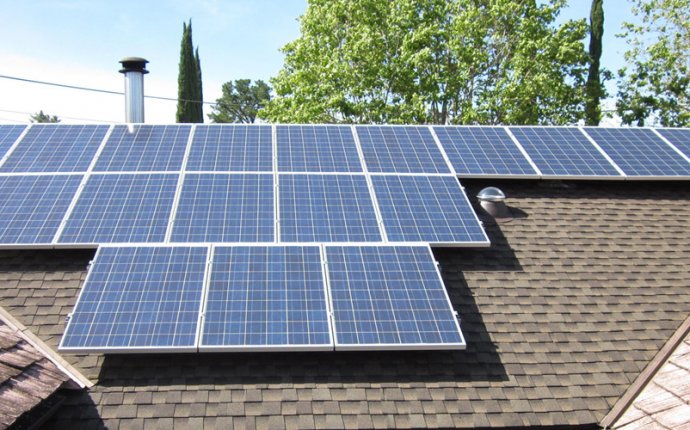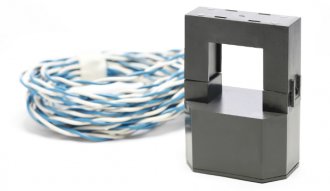
solar installs

The importance of current transformers (CT) in today’s solar installs
Energy consumption monitoring is not just a great way for homeowners to better understand their energy usage, it’s also a required element for home energy storage systems. For installers who are growing their business by offering their customers the Enphase Home Energy Solution, the Enphase Consumption Monitoring CT (current transformer) is the equipment that performs this important function. This is a new step in the installation process for some of our installer partners, and in this post we’ll answer some of the most common CT-related questions, like: can I install CTs without an electrical retrofit? (Good news, very often you can.) A little time spent building your best practices ahead of time will spare you and your crew from missed opportunities, and save you costly troubleshooting time later. Keep reading to learn how to build the most efficient consumption monitoring CT installation process.
First, let’s make sure everyone knows what CTs are. In a residential setting, CTs are small devices used throughout the electrical system, on distribution lines and at the circuit level, to efficiently measure electrical current. They measure current by wrapping a secondary winding around a live wire, inducing a secondary current that’s proportional to the current on the primary conductor.
In the Enphase Home Energy Solution, CTs perform both consumption monitoring and revenue-grade production monitoring. Current measurements are used to calculate power and energy, and used by the Envoy to control microinverter and storage system operation. Two consumption CTs must be installed alongside the Envoy-S Metered gateway. A production meter is preinstalled in the Enphase AC Combiner Box and is included with all Envoy-S Metered purchases. The Enphase Production Monitoring CT can’t be replaced with an off-the-shelf production CT, since each one is calibrated to and paired with an Envoy right at the factory. This also means that if you ever need to replace an Envoy-S Metered in the future, you’ll have to replace the CT as well.
Below are recommendations that will simplify and streamline the CT installation process. These tips are broken down into three categories: what to do before the install, during the install, and during commissioning with the Enphase Installer Toolkit mobile app. Continue to the bottom of this post for a detailed description of each step.
Before the install
- Verify that the site can accommodate consumption monitoring
- Find a location for the AC Combiner Box or the Envoy-S near the main service panel
During the install
- Be polarity correct
- Wire CTs into the appropriate terminal inputs on the Envoy and verify measurements with the Installer Toolkit
- Match voltage and current measurements on the same phase
Please think of these tips as a quick reference guide to complement the Enphase Consumption Monitoring CT installation manuals; they’re not a replacement for the installation manuals. At the bottom of this post you’ll find a few more resources, including production and consumption CT installation videos.
Commissioning with Installer Toolkit
- Use the Installer Toolkit mobile app
We recommend that all installers download the app to their Android or IOS devices and log in to Enlighten Manager before going to the job site.
Before the install
It’s important to make sure that the home where you’re installing the Enphase Home Energy Solution can easily accommodate the split-core consumption CTs before approving consumption monitoring as part of a project. At some sites, the conductors or the bussing between the utility meter and the main breaker of the service panel are not accessible or do not have adequate space to fit the consumption CTs.
One simple solution is to install consumption CTs directly around the load circuit conductors inside the main service panel. If consumption monitoring cannot be readily accommodated, consider potential modifications to the service wiring. These can include offering your customer a service upgrade with equipment that will accommodate the consumption CTs, or moving the electrical service utility meter socket, making room for the consumption CTs.
To simplify wiring of the consumption CTs, install the AC Combiner Box and the Envoy-S Metered at or near the main service panel.
During the install
Polarity is determined by the direction of the secondary winding. If installed backwards, meter readings that should be positive will instead be negative. CTs are marked with an arrow that must point towards the load. Polarity errors are one of the most common (and easily avoidable) problems with CT installation.
- Wire CTs correctly and verify measurements
CTs must be fed directly into the Envoy-S Metered with correct CT orientation, and they must be connected to the correct terminals on the Envoy.
The Envoy has three terminal blocks: one for power, one for CTs, and one reserved for other uses, such as turning off systems operating in Zero Export mode. Consumption CTs must not be wired to the terminal block on the right side of the Envoy-S.
The Envoy cannot properly control the AC Battery if current is measured as part of solar photovoltaic (PV) current, or if the battery is not a load measured by the consumption CTs. Make sure the batteries are installed on the load side of the consumption CTs, not the load side of the production CTs. This is especially important when using a subpanel for PV and storage circuits. Finally, make sure that solar passes through the production CTs.
- Match voltage and current on the same phase
As noted above, consumption CTs will report negative current measurements if installed backwards. They will also report negative measurements (or a zero measurement) if the two consumption CTs are not wired to the correct terminals on the Envoy. The CT that is placed around Line 1 must be wired to Consumption Terminal A in the Envoy, and the CT that is placed around Line 2 must be wired on Consumption Terminal B. For this reason, we recommend marking the physical CT housing and the CT’s sense wire ends with black or red tape. These markings will indicate the appropriate service conductor that each CT measures, avoiding confusion once you’ve pulled wire through the conduit.
Commissioning with Installer Toolkit
With Installer Toolkit, you can quickly and easily confirm that CTs are operating and enable production metering. Remember to enable production metering first, then confirm proper metering while onsite. With the solar energy system turned off, confirm that CTs are operating, and make sure your readings are positive. Then enable consumption metering and turn solar on. Select consumption meter type based on whether CTs are wired on load circuits only or on circuits with load and solar production. After five minutes, load-only readings should be greater than readings with load and solar. Test CTs using a known load source, such as a hair dryer at its highest setting.
Resources
Enphase has many resources available to prepare you and your installation team for success with the Home Energy Solution.
This 13-page document covers CT installations in Eaton service panels and Eaton solar power centers, as well as other challenging scenarios, such as installations with multiple conductors in a single CT, parallel-connected CTs for 400A service, and crowded service panels.
This 5-minute video includes step-by-step instructions for installing a production CT for systems that do not use the AC Combiner Box with a pre-installed production CT, and how to verify installation using Installer Toolkit.









